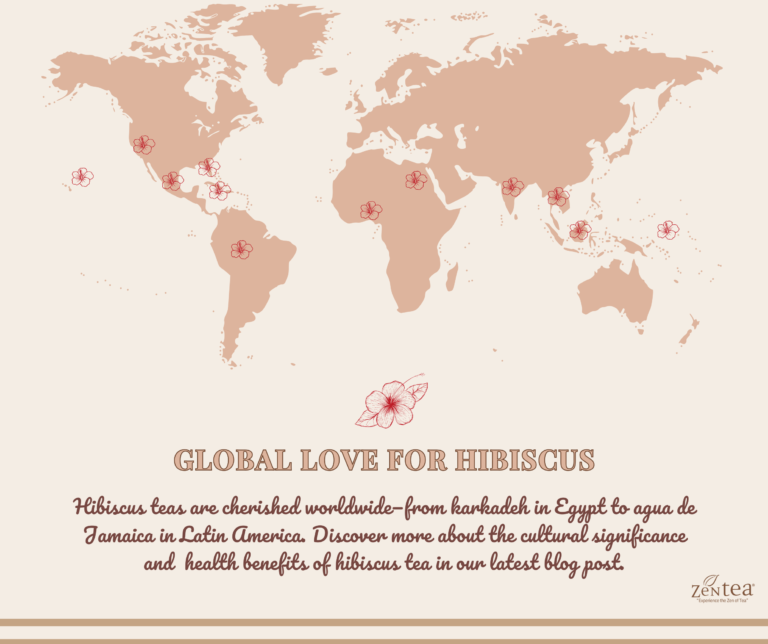
The Global Love for Hibiscus: A Journey Through Cultures and Flavors
Hibiscus tea, with its vibrant ruby hue and tangy flavor, is more than just a drink. It’s a cultural treasure enjoyed across the globe, connecting people through shared traditions and unique interpretations. From the bustling streets of Cairo to the tropical shores of the Caribbean, hibiscus has woven itself into the hearts of many. Let’s explore how this remarkable flower has become a beloved staple worldwide.
Karkadeh: A Taste of Egypt and Sudan
In Egypt and Sudan, hibiscus tea is known as karkadeh, a drink steeped in history and tradition. Popular for its cooling properties, karkadeh is often served chilled, providing a refreshing escape from the desert heat. It’s a common sight at weddings and celebrations, symbolizing joy and hospitality. Egyptians believe karkadeh not only quenches thirst but also brings good health, as it is rich in antioxidants and known to support heart wellness.
Agua de Jamaica: A Caribbean and Latin American Favorite
Across the Atlantic, hibiscus takes on a new identity as agua de Jamaica in Mexico, Central America, and parts of the Caribbean. This sweet and tangy beverage is a staple at family gatherings, street markets, and celebrations. Often served over ice, agua de Jamaica pairs perfectly with spicy dishes, balancing flavors with its crisp, tart notes. In the Caribbean, it is also known as sorrel, where additional spices like cinnamon and ginger are added to create a warm, festive drink, especially during the holiday season.
Hibiscus in Asia: A Medicinal Marvel
In parts of Asia, hibiscus is celebrated not just as a tea but as a powerful medicinal herb. In India, hibiscus is a key ingredient in Ayurvedic remedies, known for its ability to cool the body, promote digestion, and improve skin health. In Thailand and Malaysia, hibiscus tea is a popular health drink, enjoyed for its vibrant color and wellness benefits.
Hibiscus in the Pacific Islands: A Symbol of Beauty
In the Pacific Islands, hibiscus transcends the teacup to become a cultural icon. Known for its symbolic connection to love, beauty, and vitality, the hibiscus flower is often worn behind the ear or used in traditional ceremonies. While it is less commonly consumed as tea in these regions, its presence in gardens and decorations highlights its significance.
A Modern-Day Global Sensation
As hibiscus gains popularity in wellness circles, its appeal continues to grow. From hibiscus-infused kombucha to creative cocktails, this versatile flower is being embraced by modern culinary enthusiasts. Its natural tartness makes it a favorite in everything from desserts to savory dishes, proving that hibiscus’s charm extends beyond tradition.
Why We Love Hibiscus
Hibiscus is more than a flavorful tea; it’s a celebration of cultural diversity. Each region has its own way of preparing and enjoying hibiscus, yet the love for its bold taste and health benefits unites us all. Whether you’re sipping on karkadeh in Cairo, enjoying agua de Jamaica in Mexico, or exploring a hibiscus-inspired creation in your local cafe, you’re part of a global tradition that celebrates connection, wellness, and the simple joy of tea.
So, the next time you brew a cup of hibiscus tea, take a moment to appreciate the journey it has traveled—from flower to cup—and the rich tapestry of cultures that have cherished it for centuries.
Have you experienced the magic of hibiscus in your corner of the world? Share your favorite recipes and traditions in the comments below!
Looking to try hibiscus teas yourself? Shop our hibiscus teas here and bring a taste of this global tradition to your home

